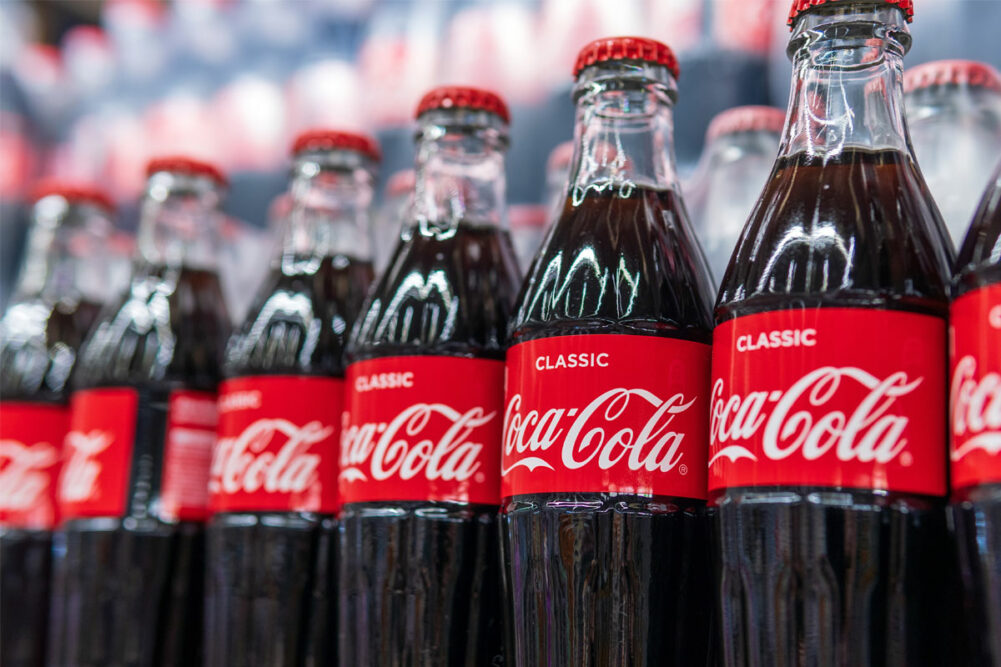ATLANTA — Fiscal-year guidance was raised at The Coca-Cola Co. on July 26 after the Atlanta-based company dealt with inflation in certain global areas and private label competition in the second quarter ended June 30.
Net income attributable to Coca-Cola Co. shareowners was $2.55 billion, equal to 59¢ per share on the common stock, which was up 34% from $1.91 billion, or 44¢ per share, in the previous year’s second quarter. Net revenues increased 6% to $11.97 billion from $11.33 billion. Organic revenues increased 11% due to 10% growth in price/mix and 1% growth in concentrate sales.
“In the second quarter, competing macro forces were at play across our markets,” said James Robert B. Quincey, chief executive officer, in a July 26 earnings call. “On the positive side, many supply chain pressures eased, concerns surrounding the stability of the banking sector diminished, and energy prices continue to pull back from record highs. However, global inflation was still elevated, and geopolitical tensions continue to exist in some markets.”
Coca-Cola now expects fiscal-year organic revenues to increase 8% to 9%, up from previous guidance of 7% to 8%.
“As we look toward the second half, the global inflationary environment is impacting consumers and our business differently across geographies,” Mr. Quincey said. “In developed markets like North America and Western Europe, inflation is beginning to moderate, and labor markets remain strong. Our elasticities continue to be relatively low.
“However, we have seen some willingness to switch to private label brands in certain categories. Across the sector, consumers are increasingly cost-conscious. They’re looking for value and stocking up on items on sale. In these markets, our pricing is largely in place and is expected to moderate as we cycle pricing initiatives from the prior year. It's more important than ever to be consumer-centric and to partner with customers to provide affordable and premium propositions, which deliver value through basket and incidence growth.”
Consumers in Latin America, the Middle East and Africa are accustomed to persistent inflation, he added, but inflation is hitting many countries. Five of Coca-Cola’s top 40 markets are experiencing over 20% annual inflation.
Switching to private label primarily is happening in Europe and to some extent the United States, Mr. Quincey said.
“So we see it more in terms of beverages, happening in water and juices rather than soft drinks and certainly less when you get to colas,” he said.
Unit case volume in the second quarter for the Coca-Cola Co. was even with the previous year’s second quarter.
Volume in sparkling soft drinks was even. A decline in Europe, Middle East and Africa, primarily due to suspending business in Russia, offset a strong performance in Asia Pacific and Latin America. Volume in juice, value-added dairy and plant-based beverages also was even as suspending business in Russia offset growth in fairlife in the United States and Minute Maid Pulpy in China.
Volume in water, sports, coffee and tea was even. Sports drinks declined 3%, primarily driven by BodyArmor and Powerade in the United States. Coffee volume increased 5%, and tea was up 1%.
In North America overall, unit case volume declined 1%. Declines in water, sports, coffee, tea and trademark Coca-Cola more than offset increases in sparkling flavors and juices, value-added dairy, and plant-based beverage.
In Europe, Middle East and Africa, unit case volume declined 5%.
“Europe had a positive volume in the first half if you take out Russia, and so we’re feeling good about Europe as we go into the second half,” Mr. Quincey said.
Through the first half of the fiscal year, net income attributable to Coca-Cola Co. shareowners was $5.65 billion, or $1.31 per share on the common stock, which was up 21% from $4.69 billion, or $1.08 per share, in the same time of the previous year. First-half net revenues increased 5% to $22.95 billion from $21.82 billion.
Freight rates are favorable compared to last year, said John Murphy, president and chief financial officer, but other commodities like sugar and juice remain elevated. He said he expects commodity price inflation in a range of mid-single-digit percentages on comparable cost of goods sold in 2023.





